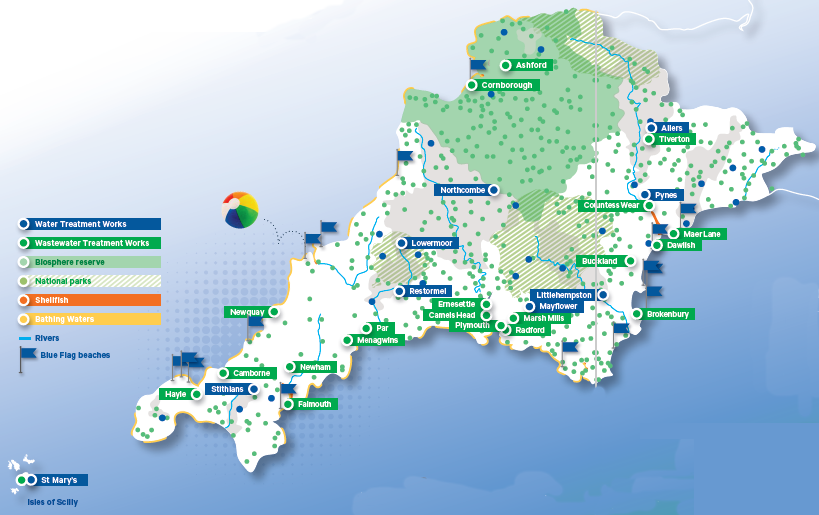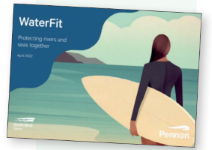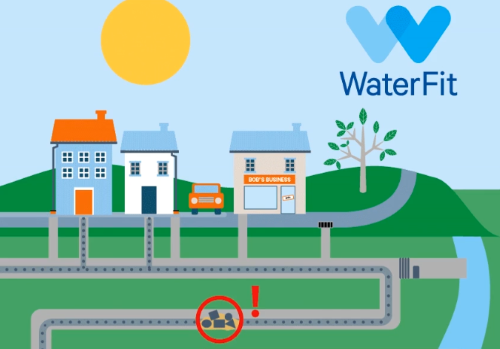
 Rivers and bathing waters
Rivers and bathing waters
The beautiful blue waters of the South West are the region’s pride and joy. A lot of our economy is built off the tourism this coastline attracts, and as such, we have an enormous responsibility to keep them as clean and safe as ever. It’s a responsibility we don’t take lightly.
 What does the Water Industry mean by 'bathing waters'?
What does the Water Industry mean by 'bathing waters'?
According to The Bathing Water Regulations 2013, a bathing water is identified as a body of water “at which the Secretary of State expects a large number of people to bathe”.
The quality of these waters are closely monitored for harmful bacteria, and water companies are just one of many groups responsible for keeping them safely in line with the strict regulations.
To the right is a map that shows where South West Water’s designated bathing waters are.
 What’s the current state of our bathing waters?
What’s the current state of our bathing waters?
In 2022, we were delighted to announce 100% of our coastal bathing waters met the standards, with 99% achieving Good/Excellent water quality classification (in line with the Bathing Water Regulations 2013). This classification applies during the bathing water season only (May-September).
However, we know that further inland, we need to improve the impact we’re having on river bathing water quality. We’ve seen massive improvements through our Upstream Thinking and Downstream Thinking programmes, and we’ve now committed to achieve the region’s first bathing water quality river by 2025.
Find out more about bathing water quality here.

 How are we protecting our bathing waters?
How are we protecting our bathing waters?
In 2022, we launched a brand new, 3-year programme of investment in our bathing waters called WaterFit.
We’ll be investing £330 million into our assets and working with others to:
|
Find out more about our plans here: |
 What are the main threats to bathing waters?
What are the main threats to bathing waters?
We’ve carried out a lot of research into the threats the South West is particularly vulnerable to. The Top 5 are:
Climate Change
The South West is particularly vulnerable to climate change, given its 860 miles of coastline, and adjacency to the western approaches of the Atlantic Ocean, exposing the area to impacts from rising sea levels and storm intensity.
We’ve already seen the impacts of this change with the 2022 Drought, which was the fourth driest period since records began, over 130 years ago, alongside the hottest temperatures ever recorded in the region.
But don’t worry. We’re confident that our investment has considered the risk of climate change, and will bring a new level of resilience and lower environmental impact to our operations.
Population growth
Did you know that since 1989 there’s been a 20% increase in the population in the South West? And over the last 15 years there’s been a 50% increase in tourism. The numbers prove what a popular place the South West is.
But with these numbers comes the daunting fact that we’ve seen a 25% increase in treated flows through our network. This is increasing the demand on our assets, and in some places, the performance of our assets is being affected.
Our new investment plans will increase the resilience of our network to these ever-increasing changes.
Urban creep
Some areas of the South West have seen incredible growth, with new housing estates popping up, and new industrial areas and roads established. This urban creep threatens water quality because it is reducing the amount of land available for water to naturally drain into.
This means that more rainwater is entering our sewer network than ever before. Installing new surface-water sewers in key areas is a top priority for us, so that we can better manage the volume of wastewater entering our network and improve the efficiency of our treatment works.
Pollution from other sources
Agricultural impacts alone account for 46% of the reasons for poor river health in our region. It’s incredibly important that we work closely with our farming community to improve run-off levels and help implement land management techniques that will help achieve higher quality rivers.
Read more about our Upstream Thinking programme to find out how we’re doing it.
People misusing the sewers
Flushing things that aren’t pee, paper or poo, and pouring fats, oils and grease down the sink block our sewers and can cause sewer flooding and pollution into the water courses. We’re cracking down on this behaviour.
Through our Love Your Loo and Think Sink campaigns, we’re bringing more awareness to the responsibility everyone has to keep our rivers and bathing waters healthy.


